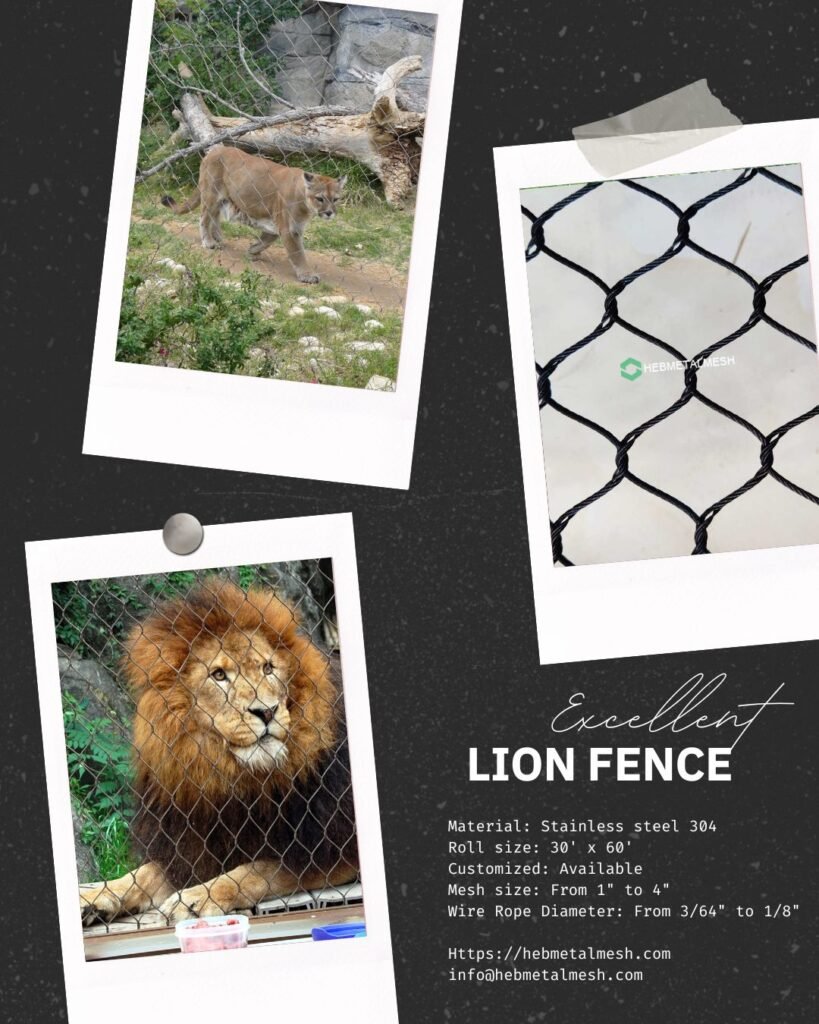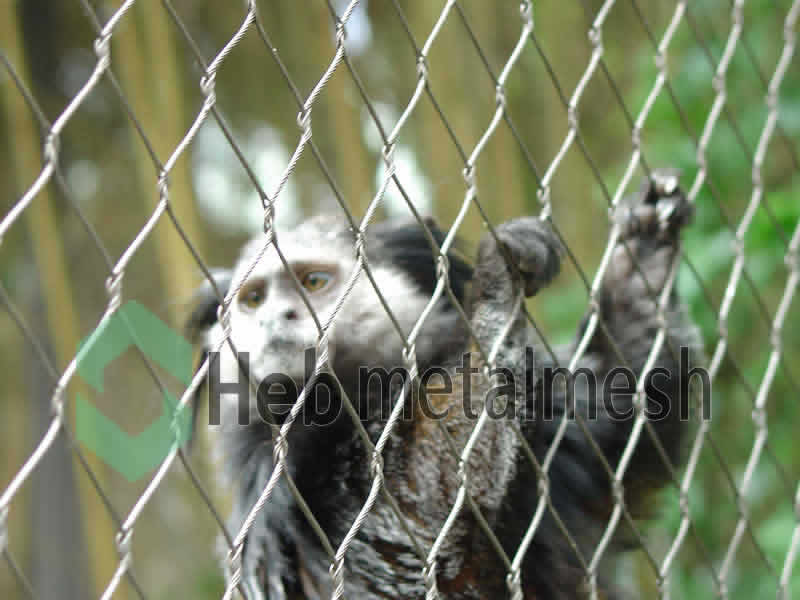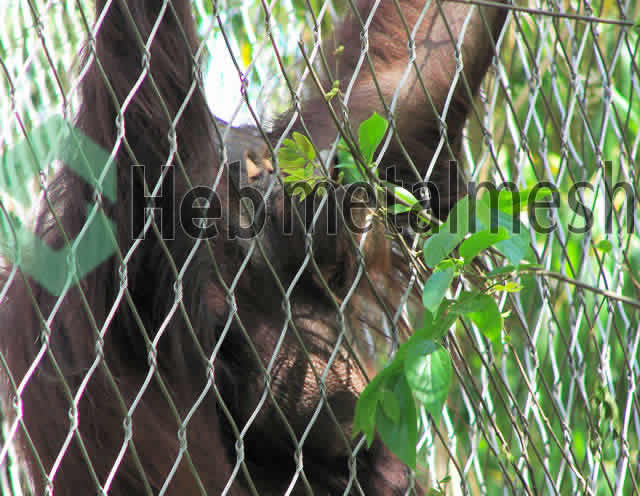Introduction to Lion Protection
The majestic lion, often referred to as the king of the jungle, faces a critical threat owing to various human-induced activities and natural challenges. These magnificent creatures are rapidly declining in numbers, highlighting the urgent need for effective lion protect efforts. Habitat loss due to urban expansion, agricultural development, and poaching are among the most significant threats that undermine the survival of these iconic animals. As the landscape changes, lions are increasingly finding themselves in dangerous situations, leading to a decline in their populations across Africa and other regions.
This situation necessitates the implementation of robust conservation strategies aimed at safeguarding lions and ensuring that they thrive in their natural habitats. Human intervention plays an essential role in lion protection; without proactive measures, the risk of extinction becomes more pronounced. Conservationists, governments, and local communities must collaborate to develop sustainable practices that prioritize lion welfare and their ecosystems. Effective management of protected areas, anti-poaching initiatives, and community education about the importance of lions are key components of a successful lion protection strategy.
Understanding the Role of Handwoven Stainless Steel Mesh

Handwoven stainless steel mesh is emerging as a revolutionary material in the conservation and protection of lions. Distinct from conventional mesh options, this innovative product combines strength, flexibility, and longevity, making it ideal for fencing and enclosures designed to keep these majestic animals safe. Unlike plastic or traditional metal enclosures that can rust or fail, handwoven stainless steel mesh is specifically engineered to withstand various environmental challenges, ensuring that it remains a reliable barrier between lions and potential threats.
The unique features of handwoven stainless steel mesh contribute significantly to its effectiveness. Its durability allows it to resist harsh weather conditions, minimizing the need for frequent replacements, which can be essential in preserving wildlife habitats. Moreover, the versatility of stainless steel mesh enables it to be configured into different shapes and sizes, accommodating various lion habitats and needs. Whether it is used in wildlife sanctuaries, zoos, or in the field, this mesh can adapt to the contours of the land, ensuring optimal security for lions.
Moreover, the open weave design of the mesh allows for necessary ventilation and visibility, ensuring that the lions can have a natural environment while being protected. This is especially crucial in reducing stress and promoting healthy behaviors in captive settings. Increasingly, conservationists and wildlife experts are recognizing that employing handwoven stainless steel mesh does not merely provide physical protection but also fosters a sense of safety vital for the lions’ well-being.
In conclusion, handwoven stainless steel mesh is not just a means of containment; it is a pivotal tool in lion conservation efforts, reinforcing the commitments of professionals dedicated to safeguarding these extraordinary animals. Its inherent properties of durability and flexibility position it as an essential element in creating secure environments for lions, ultimately contributing to their survival and thriving in diverse habitats.
Safety: The Primary Concern for Lions
The safety of lions is a pressing concern that requires immediate attention and strategic action. In both controlled habitats, such as wildlife reserves and zoos, as well as in their natural environments, these majestic creatures face numerous threats that jeopardize their well-being and survival. Poaching remains a significant danger, driven by illicit trade in lion parts and traditional medicine. As a result, many lions find themselves at risk, with their populations declining rapidly due to illegal activities aimed at profit rather than conservation.
Habitat loss is another critical issue affecting lions. Urbanization, agriculture expansion, and deforestation have led to dwindling natural habitats, forcing these animals into closer proximity with humans. This encroachment often results in human-wildlife conflict, as lions may predate livestock, leading to retaliatory killings by farmers. Such conflicts highlight the need for effective measures to protect lions and mitigate harm to both wildlife and agriculture.
In light of these dangers, implementing safety measures is paramount for lion protection. Handwoven stainless steel mesh provides an innovative solution, offering a robust barrier against poaching and other threats. This durable material can be employed in protective enclosures that secure lions while allowing them to maintain a degree of natural behavior. By creating safe spaces that deter poachers, stainless steel mesh plays a vital role in conservation efforts and contributes to the overall safety of lions.
Furthermore, ensuring safe habitats for lions helps foster coexistence between wildlife and human communities, reducing conflict and enhancing conservation strategies. As we further explore the importance of protective measures, it becomes evident that addressing these safety concerns is essential for the survival of lions in both controlled environments and the wild. This commitment ultimately reflects our responsibility to protect these extraordinary animals and preserve their ecosystems for future generations.
Natural Habitats and Reserves: Why They Matter
Natural habitats and wildlife reserves play a crucial role in the conservation of lions and other endangered species. These areas provide safe environments where lions can thrive without the looming threats posed by habitat destruction, poaching, and human-wildlife conflict. The preservation of such environments is essential not only for the survival of lion populations but also for maintaining biodiversity within ecosystems. By protecting natural habitats, we enable the essential ecological processes that sustain various species, including the lions and their prey.
One of the remarkable ways to ensure the integrity of these natural habitats is through the use of handwoven stainless steel mesh fencing. This type of fencing is engineered to deliver enhanced protection for wildlife reserves, forming a secure boundary that helps to deter potential threats. Traditional fencing methods often fail to provide adequate protection against both human encroachment and wildlife predators. In contrast, handwoven stainless steel mesh is resistant to corrosion and wear, making it a long-lasting option to preserve the delicate balance of ecosystems.
Furthermore, employing this netting allows for the effective management of lion populations by limiting their movement into agricultural areas, thus reducing human-wildlife conflict. This benefit is especially significant in regions where agricultural practices have increasingly encroached upon lion territory. By establishing secure fences, not only do we protect the lions but also safeguard the livelihoods of local communities that often see livestock loss as a consequence of lion presence.
In conclusion, natural habitats and wildlife reserves are vital for lion conservation efforts. Handwoven stainless steel mesh serves as a protective measure that fortifies these areas, ensuring that both lions and their ecosystems are safeguarded against external threats. Through such measures, we can enhance the prospects for lion populations while promoting coexistence between humans and wildlife. This approach underscores the necessity of innovative solutions in preserving our planet’s majestic wildlife.
The Science Behind Handwoven Stainless Steel Mesh
Handwoven stainless steel mesh stands out as a premier choice for lion protection due to its innovative engineering and exceptional design attributes. The mesh is crafted from high-grade stainless steel, which offers remarkable strength and durability. This quality ensures that the barrier can withstand the physical power of lions, minimizing the risk of breaches that could compromise their safety or the security of their environment. The tensile strength of the stainless steel fibers used in this mesh is significantly higher than that of conventional fencing materials, which often fail under stress.
Another critical aspect of handwoven stainless steel mesh is its impressive weather resistance. Unlike traditional barriers that can deteriorate under harsh environmental conditions, stainless steel is inherently resistant to rust, decay, and corrosion. This property extends the lifespan of the mesh considerably, resulting in lower maintenance costs and a reduced frequency of replacements. Thus, facilities dedicated to lion protection can rely on this material to maintain a secure enclosure regardless of the seasonal climate changes.
Longevity is a paramount consideration when selecting materials for lion protection. Handwoven stainless steel mesh, with its robust structure, ensures that the integrity of enclosures is preserved over time. This durability minimizes the risk of costly repairs and enhances the safety net for both lions and the surrounding wildlife. The mesh’s design allows for flexibility and adaptation, making it easier to configure to various landscape requirements while still providing maximum security against potential intrusions.
In conclusion, the application of handwoven stainless steel mesh in lion protection systems showcases a perfect blend of strength, weather resistance, and longevity, making it a superior option compared to conventional fencing solutions. The engineering behind this material ensures a long-lasting and reliable barrier that effectively safeguards these majestic creatures.
Case Studies: Successful Implementations
Handwoven stainless steel mesh has emerged as a pivotal element in the field of lion conservation, with various initiatives showcasing its effectiveness in protecting these majestic animals. One notable case study is the implementation of this material in South Africa’s Kruger National Park. Here, handwoven stainless steel mesh was utilized to construct wildlife enclosures that secure lion populations from poaching and human-wildlife conflicts. The results indicated a significant decrease in the number of lions harmed by snares and traps, reinforcing the vital role of this protective mesh in preserving lion habitats.
Another successful implementation took place in Kenya, where local communities faced challenges related to livestock predation by lions. By installing handwoven stainless steel mesh barriers around grazing areas, farmers were able to minimize conflicts with lions. This innovative solution not only safeguarded livestock but also fostered a sense of coexistence between local communities and lion populations. Documented reports revealed a marked increase in lion sightings in the area due to lower mortality rates, emphasizing the dual benefits of using this advanced mesh technology: it protects lions while supporting community needs.
In Tanzania, a collaborative project that employed handwoven stainless steel mesh for lion protection in Ngorongoro Conservation Area highlighted how adaptability of this material could suit various environmental conditions. The project aimed to create safe corridors for lions, allowing them to move freely without the threat of poaching. The mesh proved durable against harsh weather elements and was instrumental in maintaining the integrity of the protected zones. Conservationists noted that the successful implementation of the mesh directly contributed to the stabilization of the local lion population, illustrating its significance as a tool for ensuring their continued survival.
Who is Responsible for Lion Protection?
Lion protection is a multifaceted issue that relies on the concerted efforts of various stakeholders, each playing a critical role in ensuring the survival of these majestic creatures. At the forefront are conservation organizations, which are dedicated to the preservation and enhancement of lion populations. These entities conduct research, implement breeding programs, and work on habitat restoration initiatives that aim to create safe environments for lions to thrive. Their efforts are essential for maintaining genetic diversity and enhancing the resilience of lion populations against threats such as habitat loss and poaching.
Wildlife sanctuaries also contribute significantly to lion protection. By providing refuge for lions that can no longer survive in the wild due to injury or human intervention, these sanctuaries help to avert extinction risks for disadvantaged individuals. They often engage in public education and awareness campaigns, highlighting the importance of lions to the ecosystem and promoting responsible tourism that aids both local economies and conservation endeavors. Through these initiatives, wildlife sanctuaries foster a deeper appreciation and understanding of the challenges facing lions, driving community support for conservation efforts.
Additionally, government agencies play a pivotal role in the legal and regulatory frameworks that protect lion populations. These agencies are responsible for enforcing laws against poaching, managing national parks, and establishing protected areas where lions can roam freely without the encumbrance of human interference. Collaboration between these governmental bodies and non-governmental organizations enhances the effectiveness of conservation strategies, as they share resources, data, and expertise. Ultimately, the synergy among conservation organizations, wildlife sanctuaries, and government agencies is vital to the comprehensive lion protection strategy required to ensure a sustainable future for these iconic animals.
Choosing the Right Handwoven Stainless Steel Mesh

When it comes to lion protect initiatives, selecting the appropriate handwoven stainless steel mesh is crucial for ensuring a safe environment for these majestic creatures. Several key considerations should be addressed to optimize efficacy and durability.
First, evaluate the mesh specifications including gauge, wire thickness, and overall tensile strength. The sturdiness of the mesh should be suitable for withstanding harsh environmental conditions and potential wear from wildlife. A thicker gauge may provide enhanced protection against potential threats, while ensuring that lions cannot easily penetrate the barrier. Moreover, look for options that are rust-resistant, as corrosion can significantly weaken the mesh over time and decrease its effectiveness in protection efforts.
Second, consider the dimensions of the area that requires safeguarding. Accurate measurements will aid in determining the quantity of mesh needed and will ensure that coverage is consistent and complete. In many cases, enclosures or protective barriers around sanctuaries should be tailored specifically to the habitat needs of the lions, keeping in mind their behavioral patterns and potential interactions with outside elements.
When searching for mesh suppliers, prioritize reputable manufacturers who specialize in wildlife protection solutions. It is advisable to investigate suppliers that provide high-quality materials and have experience serving conservation organizations. Reading reviews and case studies can provide insight into the effectiveness of their products in real-world applications.
Lastly, consider implementation strategies when installing the mesh. Engaging professional install teams familiar with wildlife protection can lead to more effective results. Additionally, regular inspections should be scheduled to assess the integrity and performance of the handwoven stainless steel mesh, ensuring that it continues to serve its purpose in safeguarding the lions.
FAQS: Lion Protect – Fencing and Safety Mesh for Lions
“Lion protect” fencing refers to specialized barriers designed to safely contain lions while preventing unauthorized entry or escapes. It is essential for zoos, wildlife reserves, and sanctuaries to ensure the safety of lions, staff, and visitors. Proper fencing also protects lions from external threats and minimizes human-wildlife conflict.
Heavy-duty materials like high-tensile steel mesh, reinforced handwoven stainless steel mesh, or welded wire mesh are ideal. These must be:
Durable: Resistant to clawing, chewing, and weather.
Heightened: At least 4.5–6 meters tall to prevent jumping.
Secured: Buried underground (to deter digging) and topped with overhangs (to block climbing).
Safety mesh should have small gaps (≤5 cm) to prevent paws or teeth from getting caught.
Safety mesh adds an extra layer of protection by reinforcing weak points in fencing. It prevents lions from damaging primary barriers, stops smaller predators or pests from entering, and ensures structural integrity over time. Galvanized or coated mesh is recommended to resist rust and corrosion.
Lion fencing should be minimum 4.5 meters (15 feet) tall with a reinforced top (e.g., angled overhangs or electric wire). The mesh should withstand forces exceeding 2,000 kg/sq.m to resist lion strength. Always consult wildlife safety standards or local regulations for specific requirements.
Key factors include:
Foundation: Extend mesh 1–2 meters underground to prevent digging.
Anchor points: Use reinforced posts (e.g., steel or concrete) spaced closely for stability.
Visibility: Ensure clear sightlines for monitoring lions.
Maintenance: Inspect regularly for wear, rust, or damage.
Work with professionals experienced in large carnivore enclosures to ensure compliance with safety guidelines.
Conclusion: The Future of Lion Protection
In conclusion, the protection of lions has become increasingly critical, given the multifaceted threats they face in their natural habitats. Throughout this discussion, we have emphasized the pivotal role that handwoven stainless steel mesh plays in lion protection strategies. This innovative material offers a durable and effective solution to mitigate dangers posed by encroachment and poaching.
As we look ahead, the integration of handwoven stainless steel mesh into conservation efforts signifies a profound commitment to safeguarding these magnificent animals. This method not only provides physical barriers that prevent unauthorized access to lion territories but also enhances the security of wildlife reserves. By investing in such robust technologies, we can ensure that lions are afforded a safe environment where they can thrive. The resilience of both the mesh and the ecosystems it protects is a testament to our advancing understanding of wildlife conservation.
Moreover, it is essential for individuals to engage actively with lion protection initiatives. Financial contributions to organizations dedicated to conservation, spreading awareness about the plight of lions, and participating in grassroots initiatives can all contribute to the overarching goal of preserving this species. As stakeholders in the future of wildlife, it is our collective responsibility to champion the use of effective solutions such as handwoven stainless steel mesh in the fight against the decline of lion populations. By joining forces, we can foster an environment that provides safety not only for lions but for the diverse ecosystems they inhabit.
Ultimately, the future of lion protection lies in our hands. By embracing innovative methods and fostering a community of engagement, we can ensure that lions remain a vibrant part of our planet’s heritage for generations to come.


